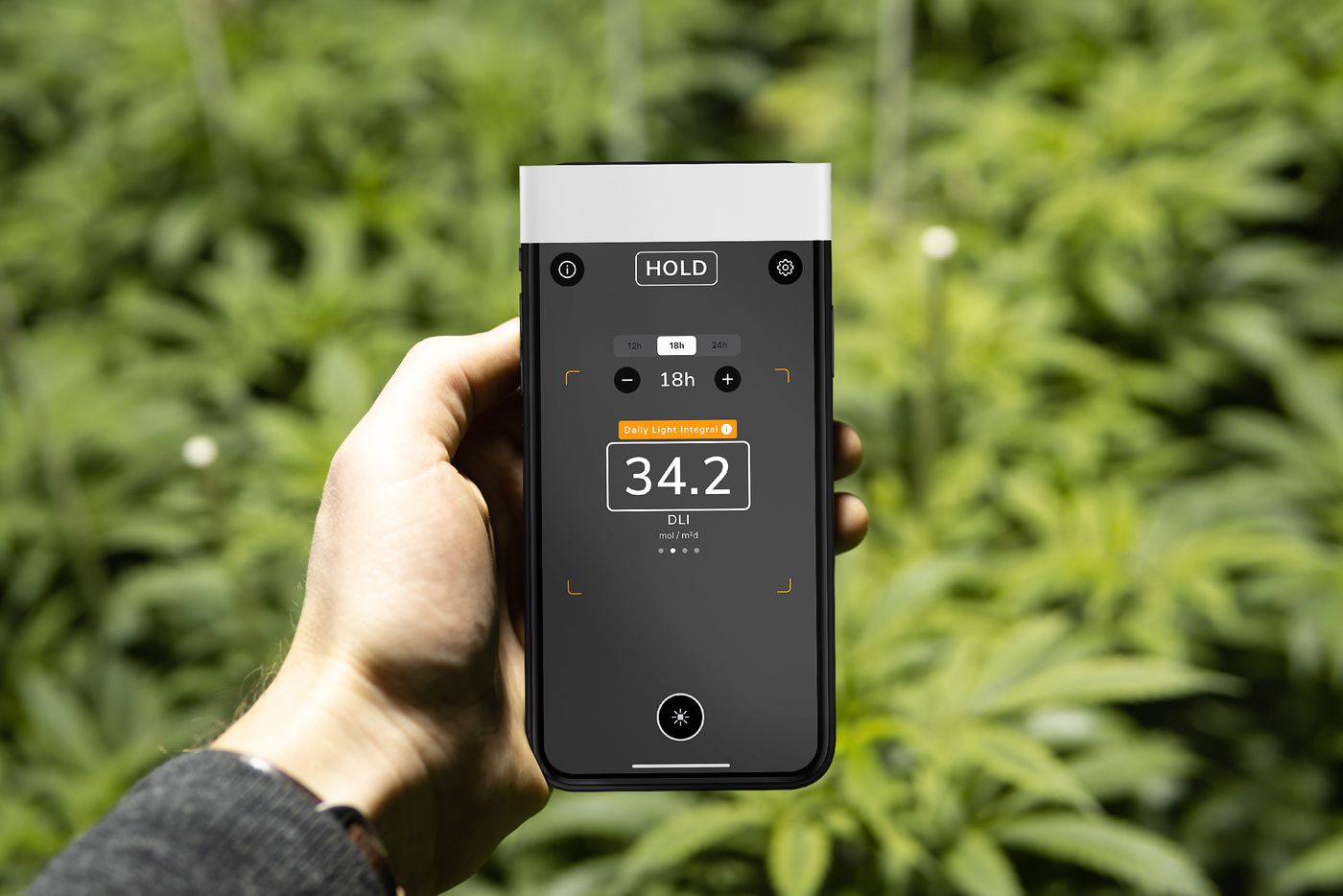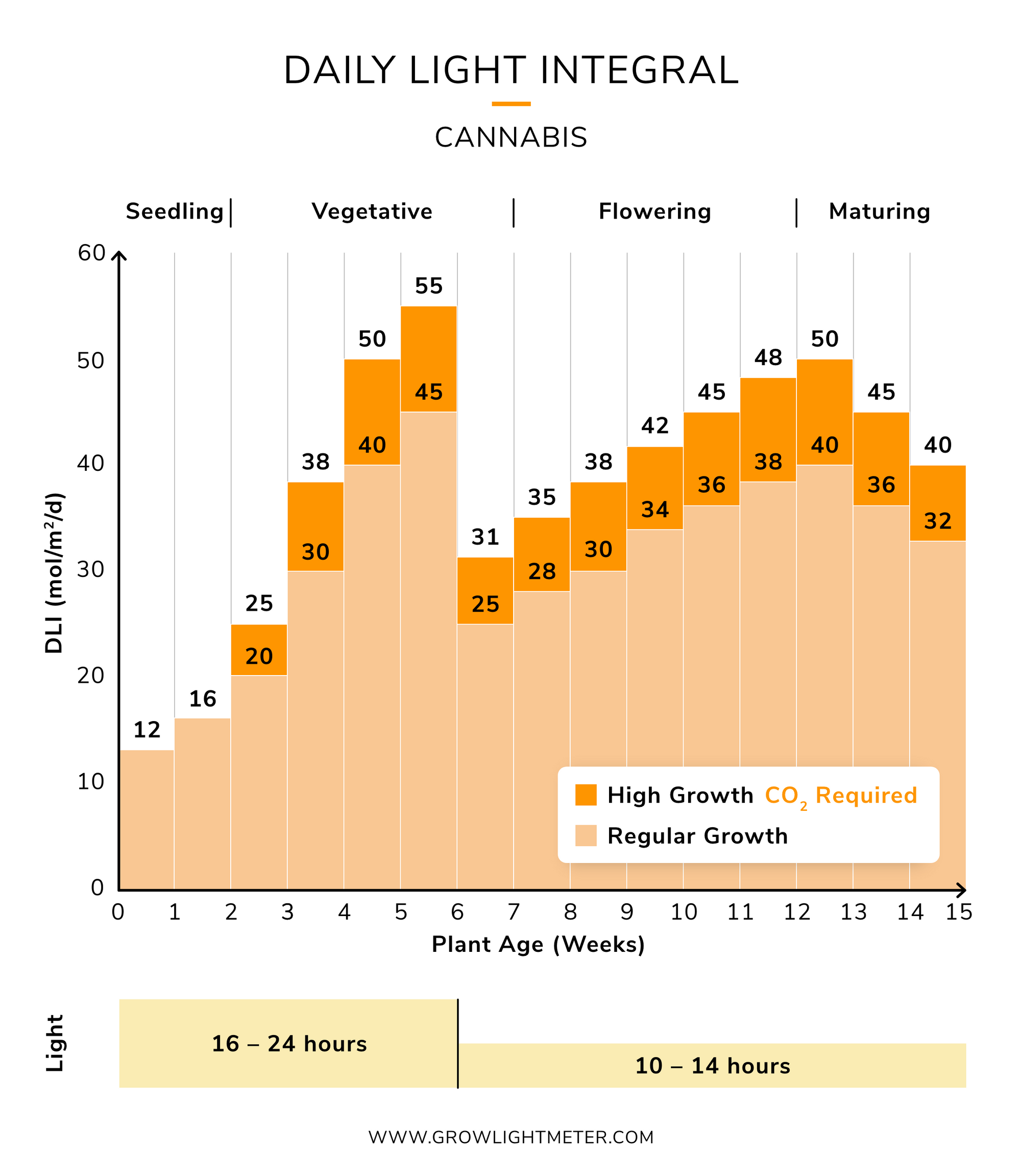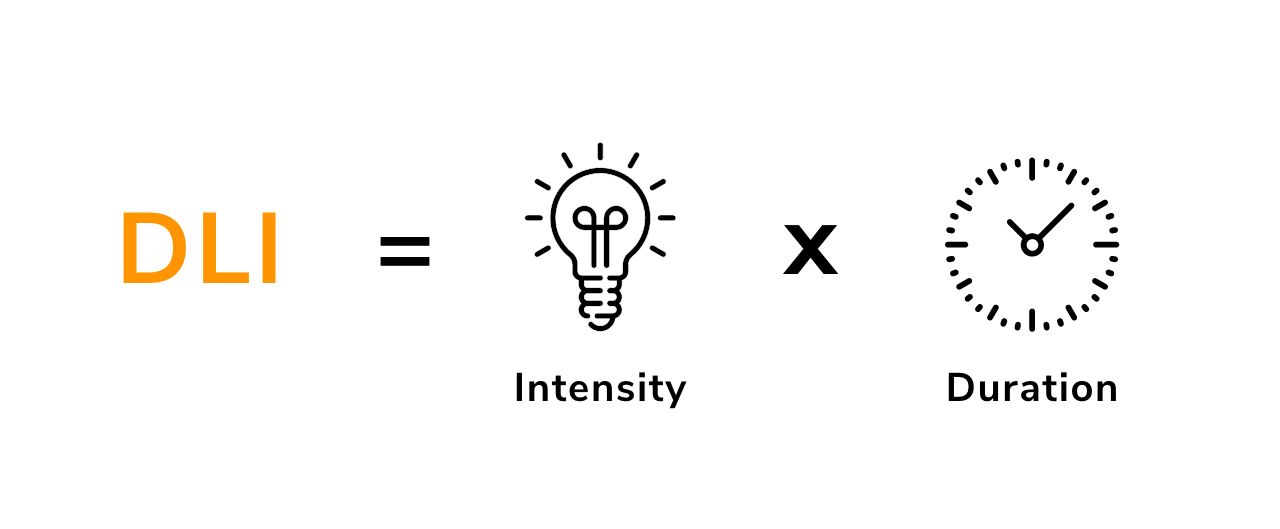
Auto-Translate
Medical Cannabis Lighting Guide
Recommended PAR and DLI levels for your medical cannabis plants

In order to grow healthy plants and yield a bountiful harvest, it is crucial to provide your cannabis plants with the proper intensity and duration of light. But just using any light won't do the trick. What you need is the right intensity of photosynthetically active radiation (PAR) in the right amount (DLI) at the leaves of your plant to really let them thrive.
DLI Recommendations
When it comes to plant lighting, the daily light integral (DLI) is the most important measure and the one metric you want to optimize. Providing too low of a DLI will result in slow plant growth and a low yield whereas providing too high of a DLI will result in wasted electricity and might even burn the plants. In general, we recommend the following ranges for cannabis:
| Growth Phase | DLI Level |
|---|---|
| Seedling / Clone | 10 – 15 |
| Vegetative | 30 – 45 |
| Bloom / Flowering | 30 – 40 |
To achieve optimal results, the DLI should be adapted across the whole growth cycle to match your plants' current needs.

Adjusting DLI
As DLI is the product of light intensity and lighting duration, you have two variables: PAR / PPFD levels and the number of hours on your timer.

In order to achieve the optimal DLI, you can adjust those two variables within the ranges that we recommend in the following sections.
Ensuring the Proper Photoperiod
As the cannabis plant is photoperiodic – meaning that it responds to the relative lengths of light and dark periods – it is crucial to maintain proper lighting times so that the plant can either be kept in the vegetative stage or initiate flowering. We recommend to keep the lighting duration in the following ranges:
| Growth Phase | Min. | Ideal | Max. |
|---|---|---|---|
| Seedling / Clone | 16 | 18 | 24 |
| Vegetative | 16 | 18 | 24 |
| Bloom / Flowering | 10 | 12 | 14 |
PAR Level Recommendations
Apart from the number of hours you keep your lights on, the proper PAR / PPFD levels are crucial in order not to under-utilize or burn your plants.
| Growth Phase | PAR Level (PPFD) |
|---|---|
| Seedling / Clone | 100 – 300 |
| Vegetative | 250 – 600 |
| Bloom / Flowering | 500 – 1050 |
Mind that PAR levels are measured as photosynthetic photon flux density (PPFD) in the unit of µmol/m²/s.
A Word On CO2
Photosynthesis mainly requires photons (light), water and CO2, so keeping control of your CO2 may be just as important as watering your plant or ensuring adequate DLI values. As for really maxing out the rate of photosynthesis, all plants do have a point where more light just does not equal more growth, but moreoften than not, inadequate CO2 supplementation is the primary limiting factor.
CO2 is measured in parts per million (ppm). General indoor CO2 levels of about 400 to 600 ppm quickly restrict photosynthetic activity to less than half of what would be possible. Supplementing higher CO2 to reach at least 800 ppm greatly boosts photosynthetic activity and allows for higher PAR levels and thus a higher PPFD. If you really want to max out your cannabis plant’s growth, we recommend the following CO2 levels:
| Growth Phase | CO2 Level (ppm) |
|---|---|
| Seedling / Clone | 400 |
| Vegetative | 400 – 800 |
| Bloom / Flowering | 800 – 1400 |
To dig deeper into the topic of adding CO2 to your cannabis grow, we recommend our article on increasing cannabis yields with CO2 covering it in much detail.
Signs For Too Much Light
Light Burn
Light burn is the most common sign of too high PAR levels on a cannabis plant. It is also commonly referred to as leaf burn and causes yellow leaves with green veins and stems.
Light burn might easily be mistaken with a Nitrogen deficiency, which also turns the leaves yellow. A simple indicator is how strong the yellow leaves are attached to the stem: While Nitrogen-deficient leaves fall off on their own, light-burned leaves are hard to pluck off. Furthermore, light burn is mainly affecting the leaves on the top of the plant while a Nitrogen deficiency starts at the bottom of the plant.
Loose And Airy Buds
An excess of light also causes the plant's metabolism to work harder which often causes nutrient deficiencies and generally weak, loose, and airy buds that might even feel crisp.
Light-bleached "White" Buds
Bud bleaching can happen when the buds itself get too much light and causes them to loose their color pigments and turn white. This must not be mistaken by a very resinous, trichome covered bud. Bleached buds are often less potent and might even lose allmost all of the cannabinoids.
Signs For Too Little Light
Slow Growth
The most obvious factor is slower than expected growth. As light is one of the key ingredients for plants to photosynthesize, with too little light, they just can't grow as desired. To identify slow growth, it might be helpful to compare the height of your plants to the regular height of the same strain at the same age.
Stretching
When in a lack of light, most plants respond to this by spurring stem growth to move themselves closer to the light. This can be detected visually by higher internode spacing and an overall taller look of the plant.
Bonus Tips
| Add CO2 to enhance photosynthesis capacity |
| Measure repeatedly and regularly |
| Look at what your plants tell you |

